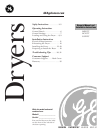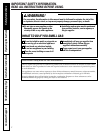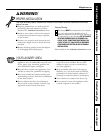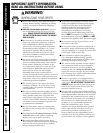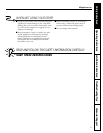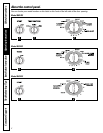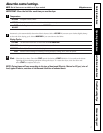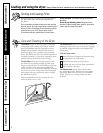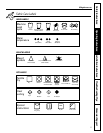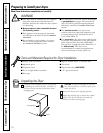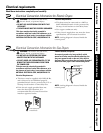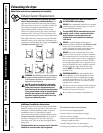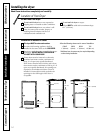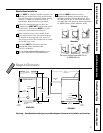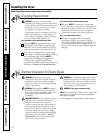
4
WHEN USING YOUR DRYER
■ Never reach into the dryer while the drum is
moving. Before loading, unloading or adding
clothes, wait until the drum has completely
stopped.
■
Clean the lint filter before each load
to prevent
lint accumulation inside the dryer or in the
room.
DO NOT OPERATE THE DRYER WITHOUT
THE LINT FILTER IN PLACE, UNLESS THE DRYING
RACK IS IN USE.
■ Do not wash or dry articles that have been
cleaned in, washed in, soaked in, or spotted
with combustible or explosive substances
(such as wax, oil, paint, gasoline, degreasers,
dry-cleaning solvents, kerosene, etc.) which
may ignite or explode. Do not add these
substances to the wash water. Do not use or
place these substances around your washer
or dryer during operation.
■ Any article on which you have used a cleaning
solvent or that contains flammable materials
(such as cleaning cloths, mops, towels used in
beauty salons, restaurants, or barber shops,
etc.) must not be placed in or near the dryer
until solvents or flammable materials have
been removed. There are many highly
flammable items used in homes such as
acetone, denatured alcohol, gasoline, kerosene,
some household cleaners, some spot removers,
turpentines, waxes, wax removers and products
containing petroleum distillates.
■ The laundry process can reduce the flame
retardancy of fabrics. To avoid such a result,
carefully follow the garment manufacturer’s
care instructions.
■ Do not dry articles containing rubber, plastic,
or similar materials such as padded bras, tennis
shoes, galoshes, bath mats, rugs, bibs, baby
pants, plastic bags, pillows, etc. that may melt
or burn. Some rubber materials, when heated,
can under certain circumstances produce fire
by spontaneous combustion.
■ Do not store plastic, paper or clothing that
may
burn or melt on top of the dryer during
operation.
■ Garments labeled
Dry Away from Heat
or
Do Not
Tumble Dry
(such as life jackets containing
Kapok) must not be put in your dryer.
■ Do not dry fiberglass articles in your dryer.
Skin irritation could result from the remaining
particles that may be picked up by clothing
during subsequent dryer uses.
■ To minimize the possibility of electric shock,
unplug this appliance from the power supply
or disconnect the dryer at the household
distribution panel by removing the fuse or
switching off the circuit breaker before
attempting any maintenance or cleaning
(except the removal and cleaning of the lint
filter).
NOTE:
Turning the Cycle Selector knob
to an off position, or pressing
PAUSE
does
NOT
disconnect the appliance from the power supply.
■ Do not spray any type of aerosol into, on or
near dryer at any time.
■ Do not place items exposed to cooking oils in
your dryer. Items contaminated with cooking
oils may contribute to a chemical reaction that
could cause a load to catch fire.
■ Never attempt to operate this appliance
if it is damaged, malfunctioning, partially
disassembled, or has missing or broken parts,
including a damaged cord or plug.
■ The interior of the machine and the exhaust
duct connection inside the dryer should be
cleaned at least once a year by a qualified
technician. See the
Loading and Using the Dryer
section. Do not use any type of spray cleaner
when cleaning dryer interior. Hazardous fumes
or electrical shock could occur.
■ If yours is a gas dryer, it is equipped with an
automatic electric ignition and does not have
a pilot light.
DO NOT ATTEMPT TO LIGHT WITH
A MATCH.
Burns may result from having your
hand in the vicinity of the burner when the
automatic ignition turns on.
■ You may wish to soften your laundered fabrics
or reduce the static electricity in them by using
a dryer-applied fabric softener or an anti-static
conditioner. We recommend you use either a
fabric softener in the wash cycle, according to
the manufacturer’s instructions for those
products, or try a dryer-added product for
which the manufacturer gives written
assurance on the package that their product
can be safely used in your dryer. Service or
performance problems caused by use of
these products are the responsibility of the
manufacturers of those products and are not
covered under the warranty to this appliance.
IMPORTANT SAFETY INFORMATION.
READ ALL INSTRUCTIONS BEFORE USING.
Consumer Support Troubleshooting Tips Operating Instructions Safety InstructionsInstallation Instructions
WARNING!



